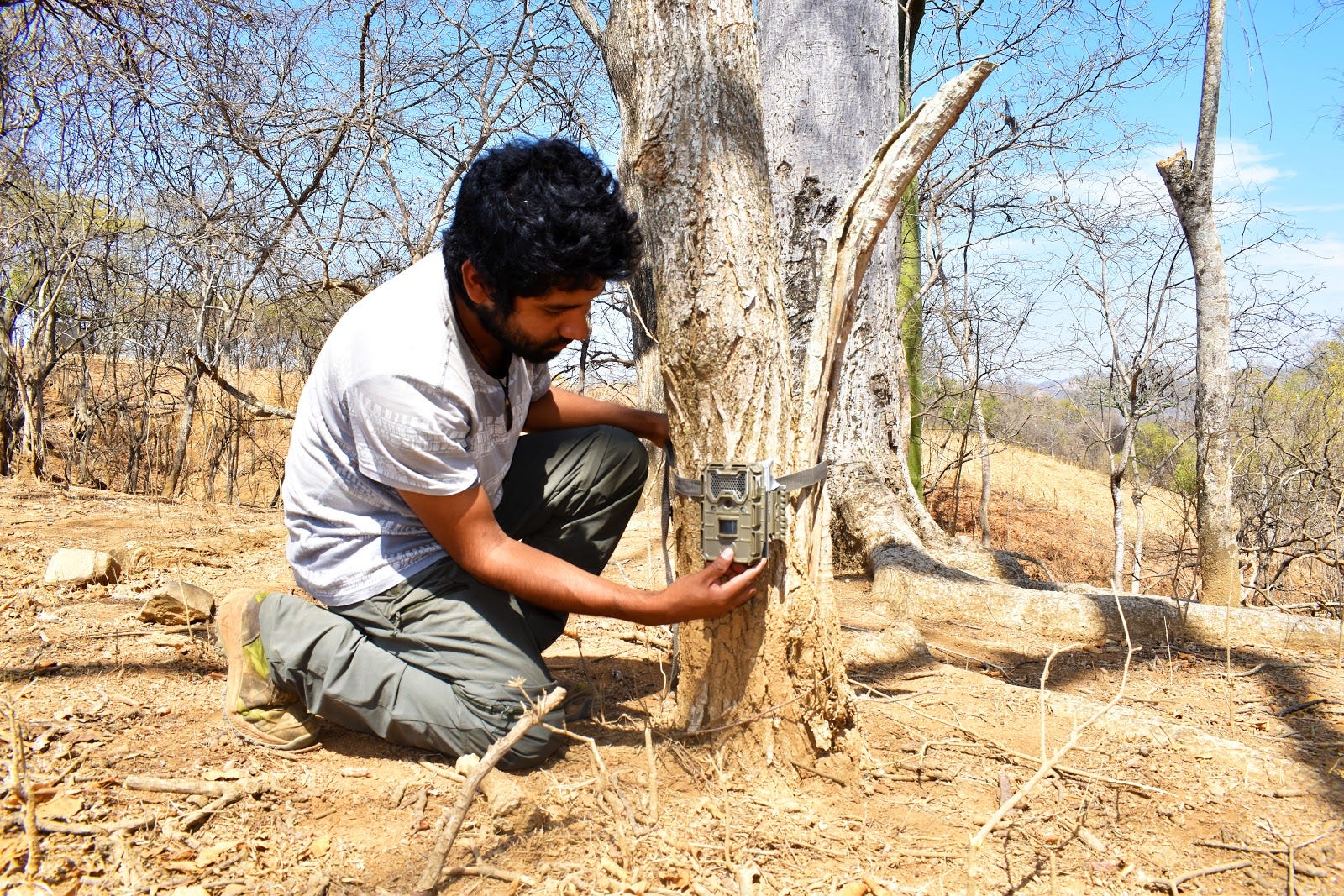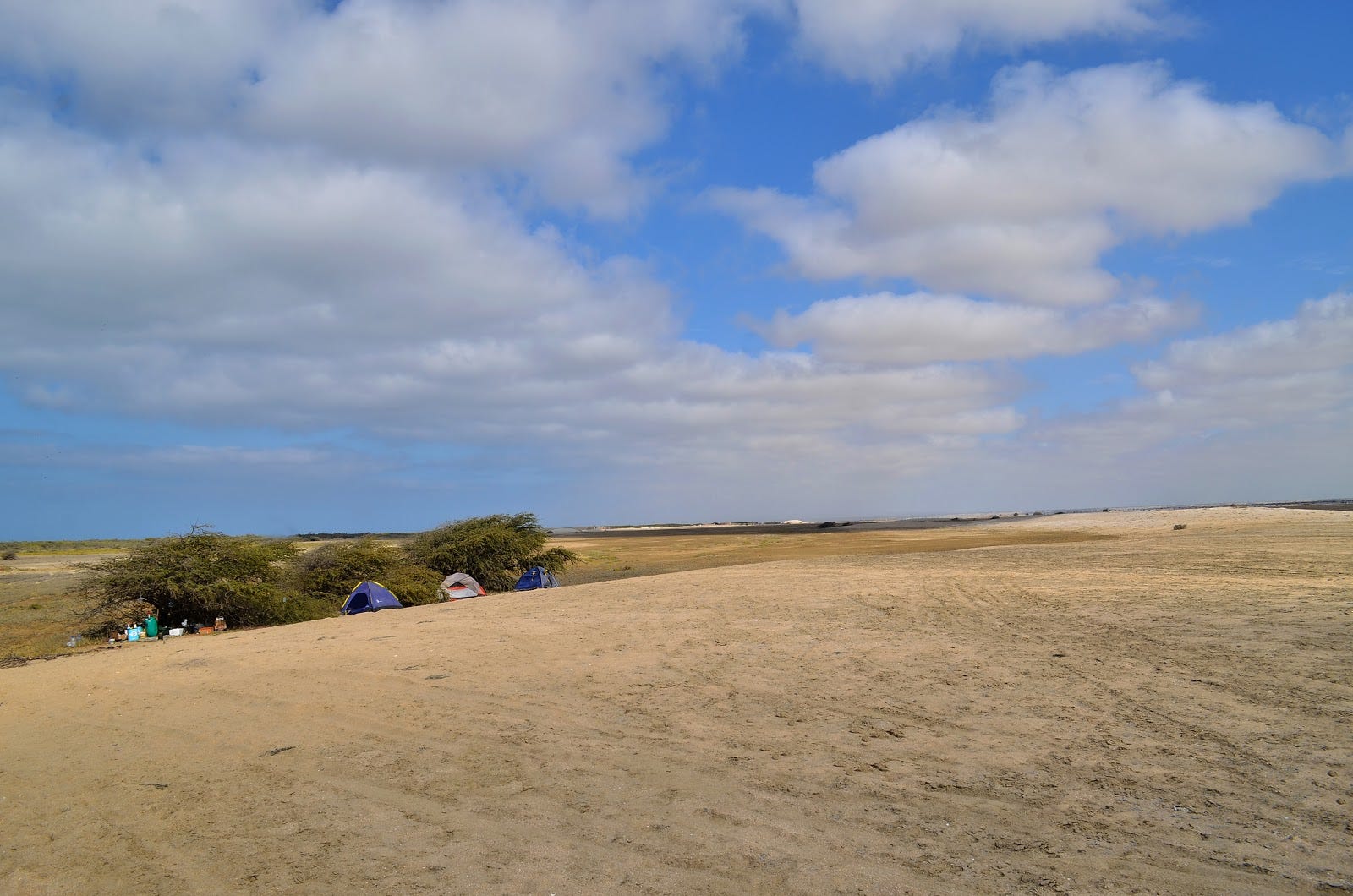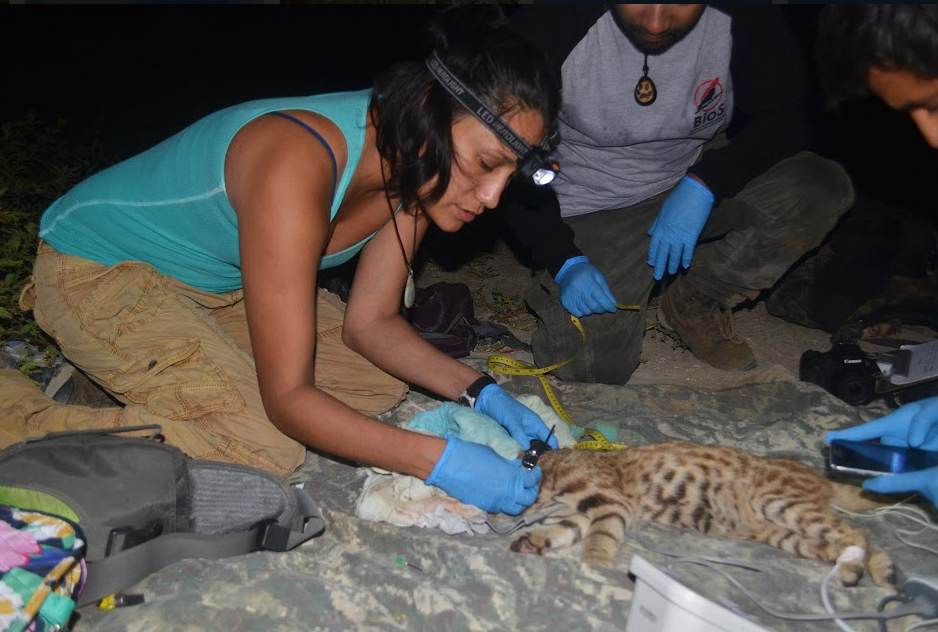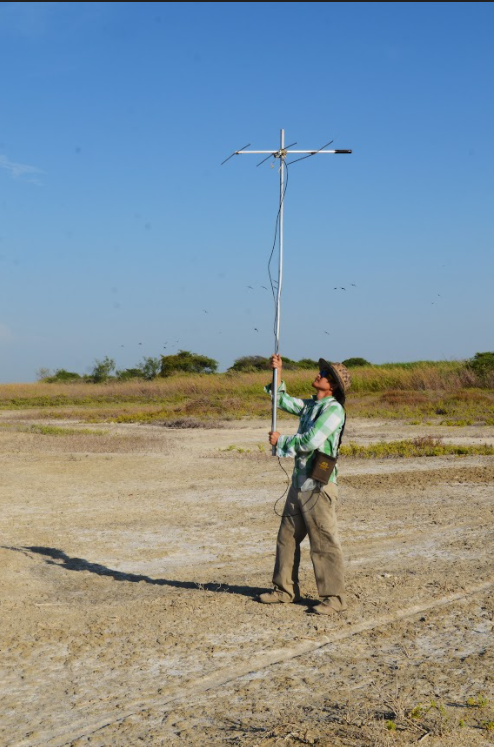Rumours of an elusive feline in the mangrove forest
Rio Button
December 23, 2020 · 8 min read
While collecting data in San Pedro de Vice Mangroves, in the Sechura desert, final year biology student, Alvaro García-Olaechea heard rumours about a “cat-like creature” lurking in the mangroves. The fisherman thought it was an ocelot. “Impossible,” Alvaro thought. He knew that ocelots only lived in dry areas and in rain forests, not in small mangrove forests within deserts.
Long after hearing the fishermen’s tale Alvaro’s mind kept returning to ponder over what the feline creature they spoke of could have been. Alvaro convinced a researcher he had met at a conference on Peruvian mammals to lend him a motion activated camera trap to try to quench his curiosity. The camera trap Alvaro was lent was so ancient it required a spool of film rather than a memory card. He set up the camera trap in a mangrove tree along the border of a tidal channel. In two days the camera trap had snapped all of the 36 frames the spool would allow for. He tells me “To be honest, I just took it [the spool of film] home and forgot about it.”
Alvaro finally got around to developing the spool. Flipping through the photographs, he was initially disappointed. Most of the photographs were triggered by leaves moving in the wind and captured nothing of interest. There were just a few photographs of animals: a black-vulture, a Sechuran fox and then the very last photo taken by the camera was a Pampas cat (Leopardus colocola) otherwise known as a Peruvian desert cat. This was the very first record of the elusive, nocturnal and rare cat occurring in northwestern Peru. He tells me seeing the camera trap photograph of the Pampas cat was a “really woohoo, yay, moment!”

A Pampas cat?
Pampas cats are small South American wild cats. They are now only found in a few hard to reach and protected areas. These cats were once hunted extensively for their soft thick coats. Today they face threats of habitat loss and degradation due to oil extraction, agricultural cropland and livestock grazing, as well as reduction of prey, which include small mammals like guinea pigs, and ground-dwelling birds. The Pampas cats have even been known to take penguin eggs or chicks from nests. Other threats to these animals are from retaliation killing by farmers, as the cats prey on their poultry and livestock, and also hunting for both cultural purposes mostly in the high Andes and for sport. Little is known about this elusive species, there is speculation the species may in fact be five species because its appearance varies so greatly throughout its range. Currently, there is inconclusive genetic evidence to support this multispecies hypothesis.

Springing into a career in Pampas cat research
This single camera trap photograph of a Pampas cat, spring boarded Alvaro into Pampas cat research. Before that he’d worked with a range of South American creatures including penguins, sea lions, Andean bears, deers, and foxes, to name but a few. He first published a short manuscript on his discovery of the Pampas cat in San Pedro de Vice mangrove in Check List Journal. Then went on to start BioS and head up Pampas cat research within it.

Introducing BioS
Biologists Edgardo Rengifo, Cindy Hurtado, and Alvaro, identified a need for research to assist with conservation and community education. Founding member, Cindy tells me how together they decided to start BioS, which is a grassroots non-profit association. BioS strives to conserve the ecosystems of Peru by engaging with local communities and helping them to use their resources in a sustainable manner. The BioS team has grown from the founding three to eight biologists. All members volunteer their time and skills to BioS, in order to enhance the sustainable development and the conservation of ecosystems in Peru by conducting scientific research and educating local communities.

Alvaro and Cindy head up the BioS Peruvian Desert Cat Project
At BioS Alvaro and Cindy have co-led investigations using camera traps to find out where Pampas cats occur and trained local students to use camera traps. BioS has successfully identified 12 new localities where Pampas cats were not previously known to occur in northern Peru and southern Ecuador They have also evaluated how local people feel about the cats, finding that local people didn’t know the cats exist or feel they are a threat to poultry

Based on these findings BioS has initiated environmental education workshops for local people to make them aware of these rare cats and highlighting their importance in ecosystems. BioS had commenced with GPS collaring Pampas cats to answer questions like:
“Where do they go?”,
“How do they survive in these rugged desert landscapes,”
“How big are their territories?”, and
“What areas are critical for Pampas cat survival?”

Cats cradle
If only catching Pampas cats to collar them was as simple as catching them on camera trap or calling “here kitty, kitty!” Cindy tells me about her field expeditions to collar pampas cats. She and her team of four, which includes biology students and a volunteer vet head out into remote parts of the desert for three weeks. These remote areas usually have no access to water or cellular phone reception. The team must make fires to cook and camp out in tents under the desert stars, braving the freezing desert nights that melt into scorching days.

Cindy tells me about their first trip to catch Pampas cats to collar them. She captured multiple images of Pampas cats sniffing curiously around the cat traps on camera traps but only caught foxes, possums and skunks. On another trip, she managed to catch just one female Pampas cat, however, she was only able to measure her and take samples, because the cat was too underweight to be fitted with a GPS collar. BioS have persisted and successfully collared four of these elusive cats thus far.

BioS proud partner of Wildcards!
New Wildcards will be launched to raise funds for the BioS. Each card has a captivating, fact-filled story about an individual animal, which BioS researches and helps protect. You’ll be able to publicly buy one of these wildcards online, which will make you the guardian of that Wildcard animal. When you buy a wildcard, you must set the price you are willing to sell it for. Every month, as the guardian of a Wildcard, you will give a specified portion of the selling price you set, to that animal’s representative conservation agency, which in this case, is BioS. At any point, someone can buy the Wildcard from you, at the selling price you specified. When someone buys the Wildcard from you, they must set a new selling price. The new guardian of the Wildcard is then responsible for giving the new monthly subscription. And so, the cycle continues, to generate funds. To find out more about BioS, go to their website. You can also find them on Instagram and Facebook and their Peruvian Desert Cat Project pages on Instagram and Facebook.

Wildcards is ecstatic about connecting funders with conservation agencies having a real world impact on the protection of wild animals at risk.
Also read:
Wildcards: an unprecedented means of funding conservation
Follow Wildcards on twitter: @wildcards_world
Follow Wildcards on Facebook: @wildcards.conservation
Follow Wildcards on Instagram: @wildcards_world
Join us on: Discord
Written by Rio Button — Chief Conservation Officer at Wildcards.
Dr Seahorse’s journey
From unravelling seahorses’ secret sounds to safeguarding the habitat of these little super dads. St...
Rio Button
June 29, 2022 · 5 min read
What wild animal leaves teddy bear footprints behind?
Photo by Helena Atkinson. Photo by Helena Atkinson. Here are some clues… Using their sticky tongues,...
Rio Button
February 07, 2022 · 9 min read
Tech innovation: Solving wildlife conservation's greatest challenge
Tech start-up Wildcards has raised over 130,000 USD for conservation organisations around the world ...
Rio Button
August 24, 2021 · 7 min read
Curious creatures under persecution
From having a deep fear of sharks to defending them. Reluctant, Grant Smith tumbled backwards off t...
Rio Button
July 26, 2021 · 8 min read
NFT Postcards for a purpose
NFT Postcards for a purpose A limited edition set of NFTs has been created in partnership with the T...
Jason Smythe
April 01, 2021 · 2 min read
Do you Care for Wild?
As rhino poaching soars, what happens to the orphaned rhino calves left behind? An orphaned baby bla...
Rio Button
February 24, 2021 · 7 min read
Where the wild things roam
South Africa’s most Endangered carnivore can’t be kept in by fences. Wildcards chatted to the man re...
Rio Button
February 23, 2021 · 10 min read
Rumours of an elusive feline in the mangrove forest
While collecting data in San Pedro de Vice Mangroves, in the Sechura desert, final year biology stud...
Rio Button
December 23, 2020 · 8 min read
South Africa’s last remaining white shark stronghold under threat
The Oceans Research Institute battles the impact of demersal longline fishing to safeguard great whi...
Rio Button
November 25, 2020 · 8 min read
Malaysia has marine mammals?
90% of Malaysians don’t know there are dolphins and whales in Malaysian waters There are at least 6 ...
Rio Button
November 17, 2020 · 9 min read


